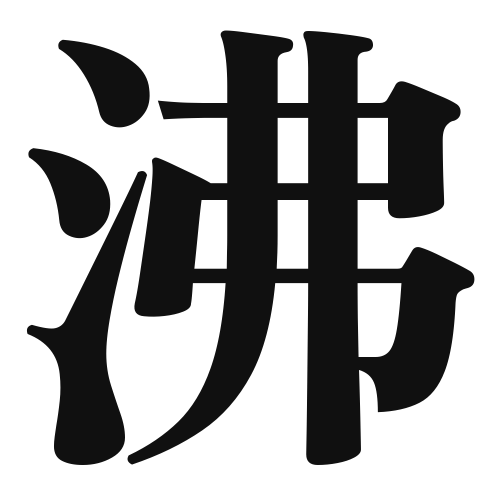1. Overview of Meaning
The kanji “沸” (pronounced “fu” in Japanese) means “to boil” or “to bubble.” It is often used to describe the process of heating a liquid until it reaches its boiling point.
2. Formation and Radical
Formation of the Kanji: The kanji “沸” is a phonetic-ideographic character (形声文字). It combines the water radical (氵) on the left, indicating its relation to liquids, with the phonetic component “畢” (pronounced “hi”), which contributes to its pronunciation.
Radical: The radical of “沸” is “氵” (water), which is commonly found in kanji related to water or liquids.
3. Examples of Usage
Common Words and Phrases:
- 沸騰 (ふっとう, futtō) – boiling
- 沸き上がる (わきあがる, wakiagaru) – to rise up (as in steam or bubbles)
Example Sentences in Daily Conversation:
- お湯が沸いたら、パスタを入れてください。 (When the water boils, please add the pasta.)
- お茶を沸かすのに時間がかかります。 (It takes time to boil the water for tea.)
4. Synonyms and Antonyms
Similar Kanji:
- 煮 (に, ni) – to simmer; this kanji refers to cooking food in liquid at a lower temperature than boiling.
Antonyms:
- 冷 (れい, rei) – cold; this kanji represents the opposite state of being cold or not heated.
5. Cultural and Historical Background
Relation to Japanese Culture: The concept of boiling is significant in Japanese cooking, especially in the preparation of dishes like ramen and tea. The act of boiling water is often seen as a ritual in traditional tea ceremonies.
Proverbs and Idioms:
- 沸騰する (ふっとうする, futtō suru) – to boil over; used metaphorically to describe situations that become intense or uncontrollable.
